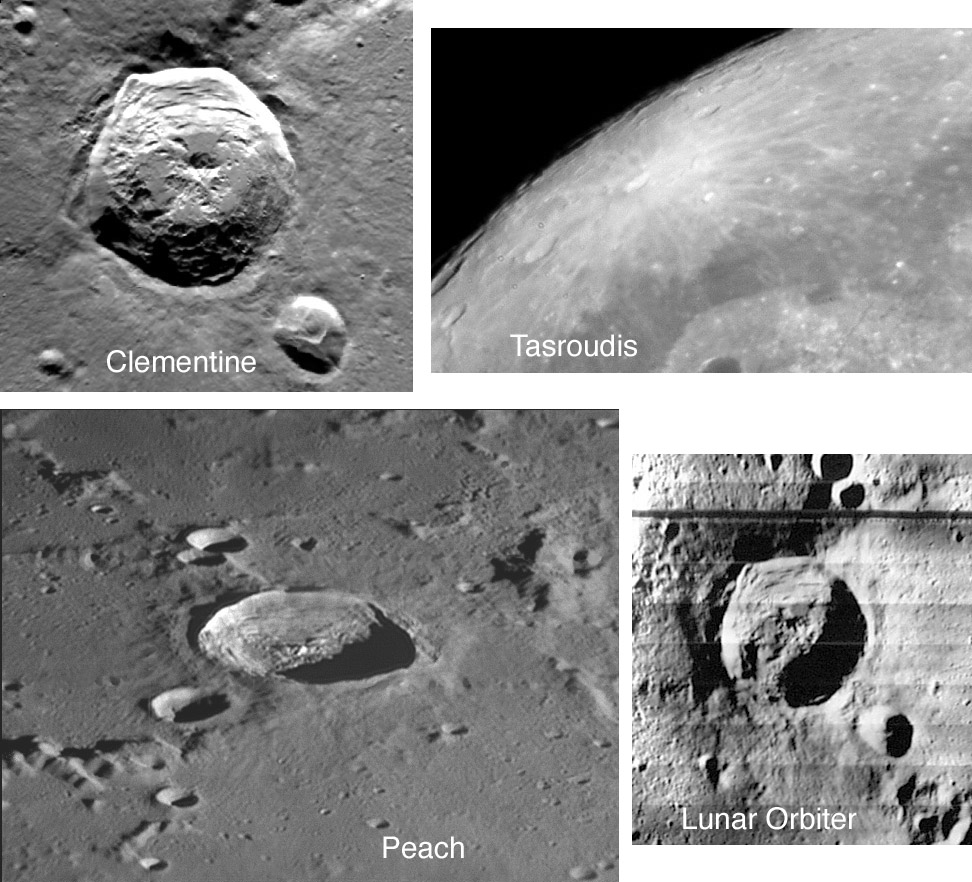
images by Damian Peach, George Tarsoudis, Clementine and Lunar Orbiter 128 H2.
I love the classic books about the Moon. The ones I grew up with are by Elger, Goodacre and Wilkins & Moore, and they systemmatically describe each named lunar feature. These books were written before we had any firm understanding of the Moon, and they were tied to hand-drawn maps of dubious accuracy. Here, chosen at random, is an example of what a new feature-by-feature book might be like. It should probably not be a book, but a web site, so that updates in information and imaging can be added. I will probably never write such a book/site – there are too many lunar craters for me to describe them all!
Anaxagoras (73.4N, 10.1W) is a 51 km wide ray crater about 15° from the north pole, that cuts the rim of Goldschmidt. Anaxagoras is a typical Tycho-like complex crater with a central peak mass on the floor, and terraced walls beneath a steep scarp of 39°. Debris from the walls extend across the floor to the peaks, forming an X pattern of irregular topography. The areas between the various mountains and hills on the floor are smooth and may be impact melt. The rays of Anaxagoras appear to be symmetric – but it is too close to the pole to see a full Moon view of their entire extent. On the Earth-facing side, the rays extend to Plato and nearly to Aristoteles. Pure anorthosite occurs in the Anaxagoras ejecta on the floor of Goldschmidt, but the crater’s other ejecta are not pure anorthosite. (Does this explain why the floor of Goldschmidt is bright at full Moon?) Ray Hawke and colleagues account for the inconsistent ejecta compositions by proposing that anorthosite underlies a more mafic unit directly under Anaxagoras. Neither pyroclastics deposits nor a radar halo are associated with Anaxagoras. Only one lettered crater is named for the crater – Anaxagoras A, with its odd central peak, is immediately to the SE.
Technical Details:
Peach: 18 April 2006. C14 @ F41 + LU075M. Tarsoudis: 09 August 2006, LXD-75 Sc 8″ + Canon EoS 350d at afocal method + barlow 2.5X + 13mm Hyperion EP.
Related links:
Rükl chart 4; Clementine chart 3
Damian’s website
Yesterday's LPOD: An Unexpected Skyful of Stars
Tomorrow's LPOD: Was Anaxagoras An Oblique Impact?



